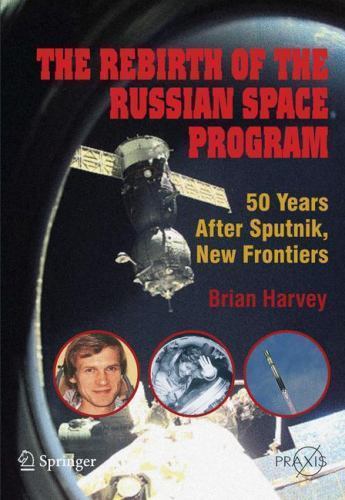Picture 1 of 1

Stock photo

Picture 1 of 1

Stock photo

Springer Praxis Bks.: Rebirth of the Russian Space Program : 50 Years after Sputnik, New Frontiers by Brian Harvey (2007, Perfect)

AlibrisBooks (483131)
98.9% positive feedback
Price:
US $38.59
(inclusive of GST)
ApproximatelyS$ 49.99
+ $23.76 shipping
Returns:
30 days return. Buyer pays for return shipping. If you use an eBay shipping label, it will be deducted from your refund amount.
Condition:
Oops! Looks like we're having trouble connecting to our server.
Refresh your browser window to try again.
About this product
Product Identifiers
PublisherSpringer New York
ISBN-100387713549
ISBN-139780387713540
eBay Product ID (ePID)59084585
Product Key Features
Number of PagesXxvi, 358 Pages
LanguageEnglish
Publication NameRebirth of the Russian Space Program : 50 Years after Sputnik, New Frontiers
Publication Year2007
SubjectPhysics / Astrophysics, Aeronautics & Astronautics, Astronomy, Automotive
TypeTextbook
Subject AreaTechnology & Engineering, Science
AuthorBrian Harvey
SeriesSpringer Praxis Bks.
FormatPerfect
Dimensions
Item Height0.3 in
Item Weight25.7 Oz
Item Length6.7 in
Item Width9.4 in
Additional Product Features
Intended AudienceScholarly & Professional
LCCN2007-922812
Dewey Edition22
TitleLeadingThe
Number of Volumes1 vol.
IllustratedYes
Dewey Decimal629.40947
Table Of ContentAlmost the end.- Building the International Space Station.- Scientific and applications programs.- Military programs.- Launchers and engines.- Launch sites.- The design bureaus.- Resurgent--the new projects.
SynopsisThe rebirth of the Russian space program marks an important event: 50 years since the first Sputnik was launched on 4th October 1957. At that time, few could have imagined the dramatic events that lay head. The Soviet Union achieved all the great firsts in cosmonautics--the first satellite in orbit, the first animal in orbit, the first laboratory in orbit, the first probe to the Moon, the first probe to photograph its far side, the first soft landing on the moon, the first man in space, the first woman in space, the first spacewalk. Except one, the first human landing on the Moon. In 1964, the Soviet Union decided to contest the decision of the United States to put the first person on the Moon. The Soviet Union engaged in that race far too late, with divided organization, and made a gallant but doomed challenge to Apollo. Undaunted, the Soviet Union rebuilt its space program around orbiting stations, building the first one, Salyut, and then the first permanent home in space, Mir. The Soviet Union still achieved many more firsts: the first lunar rover, the first soft landing on Venus, the first soft landing on Mars, the first recovery of samples from the Moon by automatic spacecraft., This fascinating text is aimed at space enthusiasts, professionals working in the space industry, journalists covering space issues and space historians. Here, fifty years after Sputnik, is the definitive book on this subject., The Rebirth of the Russian Space Program looks at the Russian space programme in 2007, 50 years after Sputnik. Brian Harvey covers all the key elements of the current Russian space programme, from manned to unmanned missions; the various types of unmanned applications programmes; the military programme; the infrastructure of production, launch centres and tracking; the commercialization of the programme and its relationship with western companies; and the programme in a comparative global context. Strong emphasis is placed on Russia?'s future space intentions and on new programmes and missions in prospect, such as Soyuz in Kourou, Kliper, Phobos Grunt and the Angara launcher. End matter contains a list of all missions since January 1991 to December 2006., The current Russian space programme is poorly known to English-speaking readers and there is a popular perception that it has succumbed to economic pressure or even 'failed'. In fact, Russia maintains an extensive space industry, has built a significant part of the space station and is about to move on to new, exciting projects.
LC Classification NumberQB1-991
All listings for this product
Be the first to write a review
















